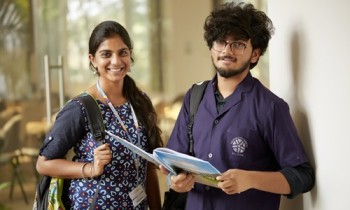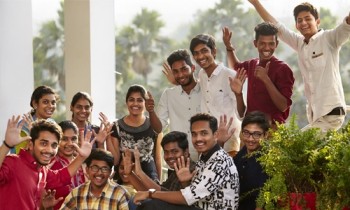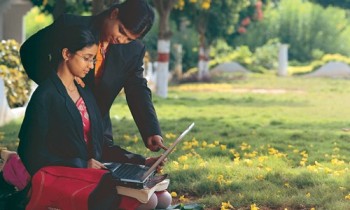| Sl.No | Metric No. | Ql / Qn | Description | Download |
|---|---|---|---|---|
| 1 | 1.1.1 | Ql | Curricula developed and implemented have relevance to the local, national, regional and global developmental needs which is reflected in Programme outcomes (POs), Programme Specific Outcomes(PSOs) and Course Outcomes(COs) of the Programmes offered by the University |
|
| 2 | 1.1.2 | Qn | Percentage of Programmes where syllabus revision was carried out during the year 2020-21 |
|
| 3 | 1.1.3 | Qn | Average percentage of courses having focus on employability/ entrepreneurship/ skill development offered by the University |
|
| 4 | 1.2.1 | Qn | Percentage of new courses introduced of the total number of courses across all programs offered during the year 2020-21 |
|
| 5 | 1.2.2 | Qn | Percentage of Programmes in which Choice Based Credit System (CBCS)/elective course system has been implemented (Data for the latest completed academic year) |
|
| 6 | 1.3.1 | Ql | Institution integrates crosscutting issues relevant to Professional Ethics, Gender, Human Values, Environment and Sustainability into the Curriculum |
|
| 7 | 1.3.2 | Qn | Number of value-added courses for imparting transferable and life skills offered during last five years |
|
| 8 | 1.3.3 | Qn | Average Percentage of students enrolled in the courses under 1.3.2 above |
|
| 9 | 1.3.4 | Qn | Percentage of students undertaking field projects / research projects / internships (Data for the latest completed academic year) |
|
| 10 | 1.4.1 | Qn |
Structured feedback for design and review of syllabus – semester wise / year wise is received from 1) Students, 2) Teachers, 3) Employers, 4) Alumni Options: A. All 4 of the above B. Any 3 of the above C. Any 2 of the above Opt one D. Any 1 of the above E. None of the above |
|
| 11 | 1.4.2 | Qn |
Feedback processes of the institution may be classified as follows: A. Feedback collected, analysed and action taken and feedback available on website B. Feedback collected, analysed and action has been taken C. Feedback collected and analysed D. Feedback collected E. Feedback not collected |
|
- Home
-
About us
Vision
To evolve into a centre of excellence in Science & Technology through creative and innovative practices in teaching - learning, towards promoting academic achievement and research excellence to produce internationally accepted, competitive and world class professionals who are psychologically strong & emotionally balanced imbued with social consciousness & ethical values.
Mission
To provide high quality academic programmes, training activities, research facilities and opportunities supported by continuous industry - institute interaction aimed at promoting employability, entrepreneurship, leadership and research aptitude among students and contribute to the economic and technological development of the region, state and nation.
Awards and Accolades -
Admissions
UG Programmes
- B.Tech / B.Pharmacy
- Electronics & Communication Engineering | Biomedical Engineering
- Civil Engineering
- CSE
- ACSE | AIML | CS | CSBS | Data Science
- Information Technology
- Electrical & Electronics Engineering
- B.Pharmacy
- Chemical Engineering | Food Technology | Textile Technology
- Mechanical Engineering | Robotics & Automation Engineering
- Agriculture Engineering
- B.Sc(Hons) Agriculture
- B.Sc PGBT BioTechnoogy

- Lateral Entry
- BBA / BCA
- B.Sc
- BBA.LL.B / BA.LL.B
- Diploma : ECE | CSE
- B.Tech / B.Pharmacy
- Research
-
Departments
- Advanced Computer Science and Engineering
- Agri. & Horti. Sciences
- Applied Engineering
- Biotechnology
- Biomedical Engineering
- Chemical Engineering
- Civil Engineering
- Computer Science and Engineering
- Department of Chemistry
- Department of Physics
- Department of Mathematics
- Department of English & Other Indian and Foreign Languages
- Department of Sciences & Humanities
- Diploma : ECE | CSE
- Electronics and Communication Engineering
- Electrical and Electronics Engineering
- Food Technology
- Information Technology
- Institute of Law
- Mechanical Engineering
- Management Studies
- Pharmaceutical Sciences
- Robotic & Automation Engineering
- Textile Technology
- Distance & online Education
- Civil Services
-
Current Students
 Student Council
Student Council
 University Life
University Life
- Alumni
- Contact us
- Hyderabad Off Campus








